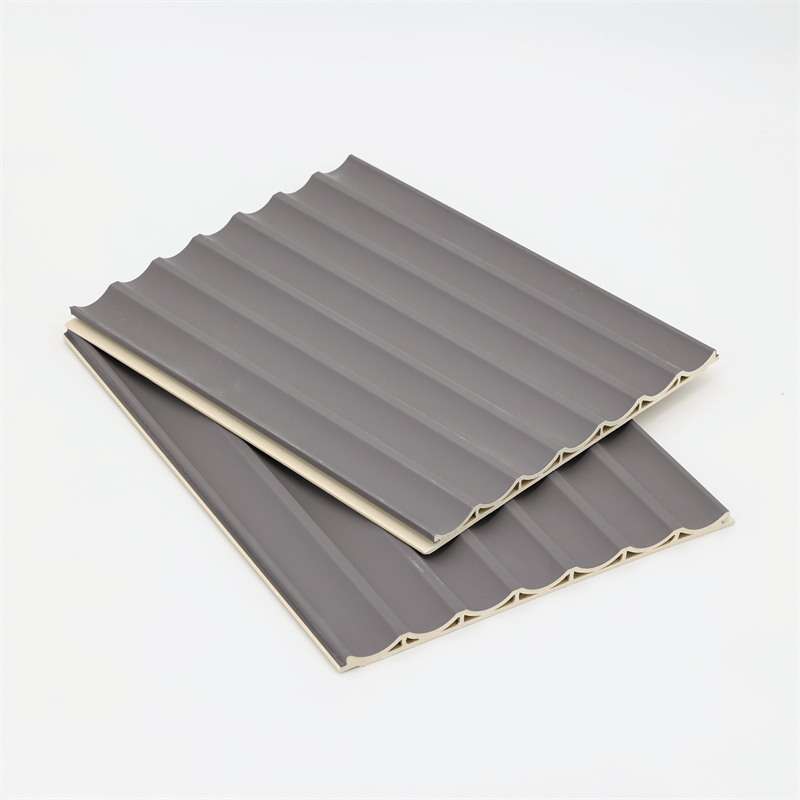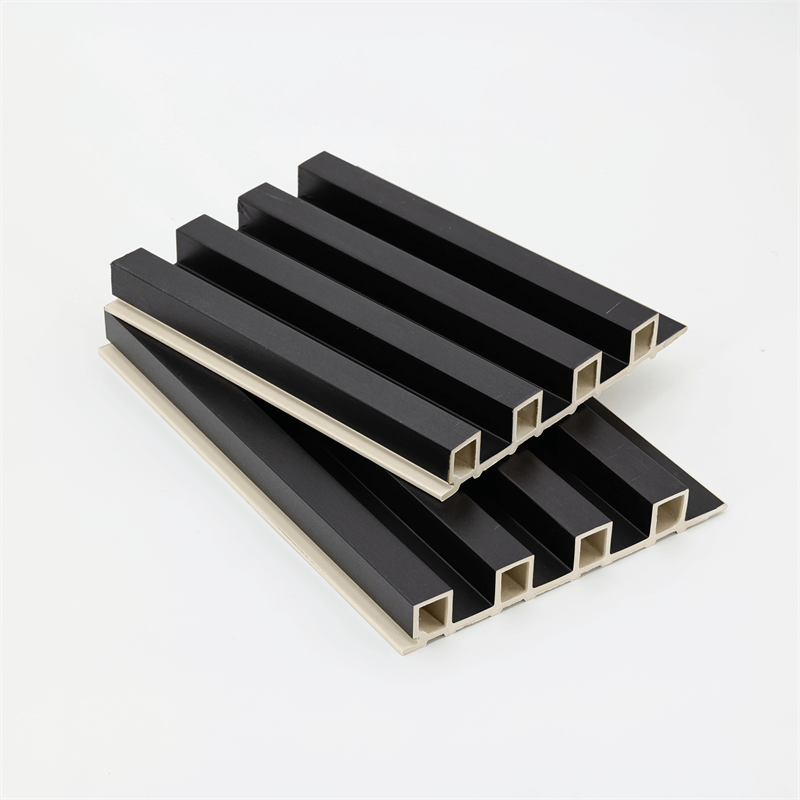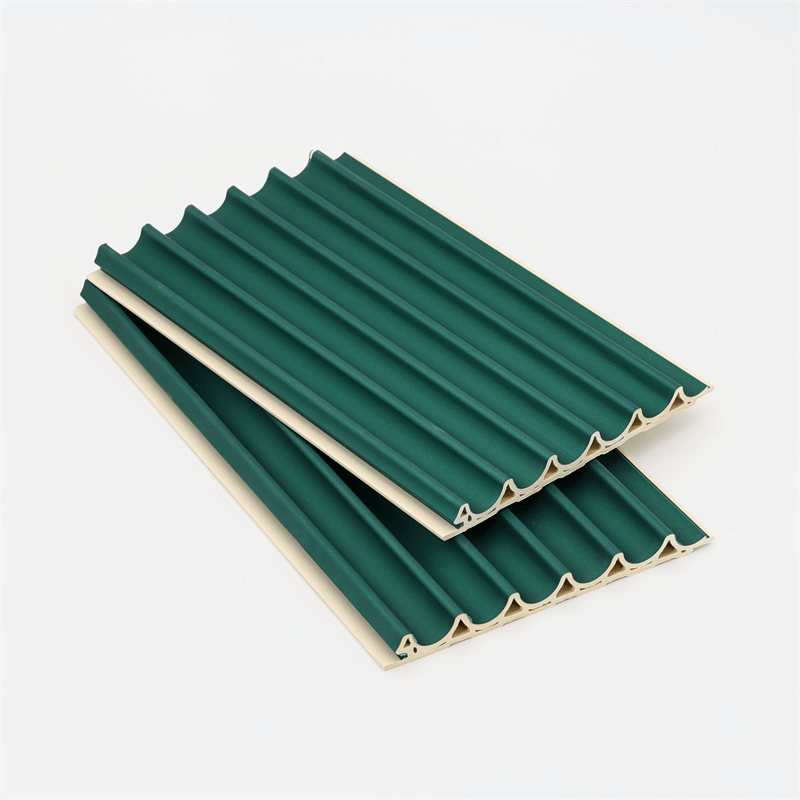As the world continues to prioritize sustainable practices and environmentally friendly solutions, the demand for eco-conscious materials in interior design has grown significantly.
WPC (Wood-Plastic Composite) wall panels have emerged as a sustainable alternative to traditional wall cladding materials.
Composed of a blend of wood fibers and thermoplastics, WPC panels offer several advantages in terms of sustainability and eco-friendliness.
In this essay, we will explore the various aspects of sustainability related to WPC wall panels.
We will delve into four key areas: use of recycled materials, reduced carbon footprint, conservation of natural resources, and contribution to indoor air quality.
I. Use of Recycled Materials in WPC Wall Panels
WPC wall panels contribute to sustainability by incorporating recycled materials into their composition.
This practice helps reduce waste and minimizes the need for virgin resources. Let’s examine the use of recycled materials in WPC panels:
- Recycled Wood Fibers: WPC panels utilize wood fibers sourced from post-industrial or post-consumer wood waste. By repurposing wood that would otherwise end up in landfills, WPC panels contribute to the circular economy by extending the life cycle of these materials.
- Recycled Thermoplastics: The thermoplastic component in WPC panels is often sourced from recycled plastic materials, such as polyethylene (PE) or polypropylene (PP). By incorporating recycled plastics, WPC panels divert plastic waste from landfills and reduce the demand for virgin plastic production.
- Waste Reduction: The use of recycled materials in WPC panels helps reduce waste generation by repurposing and transforming waste streams into valuable construction materials. This waste reduction aspect contributes to a more sustainable and efficient use of resources.
II. Reduced Carbon Footprint of WPC Wall Panels
WPC wall panels offer a reduced carbon footprint compared to traditional wall cladding materials.
The manufacturing process and life cycle of WPC panels involve fewer greenhouse gas emissions, contributing to climate change mitigation.
Let’s explore the factors that contribute to the reduced carbon footprint of WPC panels:
- Energy Efficiency: The production of WPC panels requires less energy compared to traditional materials like concrete or brick. The use of energy-efficient manufacturing processes helps reduce the carbon emissions associated with the production phase.
- Lower Emissions: The manufacturing process of WPC panels emits fewer greenhouse gases compared to the production of materials such as cement or steel. By choosing WPC panels, the carbon emissions associated with construction and building materials are significantly reduced.
- Transportation: WPC panels are lightweight compared to some traditional materials, which results in lower transportation emissions during distribution. Reduced weight translates to lower fuel consumption and carbon emissions during transportation, further contributing to the reduced carbon footprint.
III. Conservation of Natural Resources with WPC Wall Panels
WPC wall panels contribute to the conservation of natural resources, particularly forests, which play a crucial role in maintaining biodiversity and regulating the climate.
Here’s how WPC panels contribute to natural resource conservation:
- Reduced Demand for Natural Wood: By opting for WPC panels, the demand for natural wood is reduced. This helps alleviate deforestation pressures and promotes sustainable forest management practices. By reducing reliance on virgin wood, WPC panels contribute to the preservation of forests and the protection of wildlife habitats.
- Extended Lifespan: WPC wall panels have a longer lifespan compared to some traditional materials, such as paint or wallpaper. Their durability and resistance to moisture, impacts, and pests reduce the need for regular replacements, resulting in less overall consumption of resources.
- Sustainable Material Sourcing: The use of recycled wood fibers and thermoplastics in WPC panels supports sustainable material sourcing practices. By utilizing recycled materials, WPC panels minimize the need for extraction of new resources, conserving natural resources and reducing the environmental impact associated with raw material extraction.
IV. Contribution to Indoor Air Quality through WPC Wall Panels
Indoor air quality is a crucial aspect of sustainable interior design. WPC wall panels contribute to improved indoor air quality by minimizing the release of harmful chemicals and pollutants into the environment.
Let’s examine the factors that contribute to healthier indoor air quality:
- Low VOC Emissions: WPC panels have low volatile organic compound (VOC) emissions compared to some traditional wall cladding materials. VOCs, commonly found in paints or adhesives, can have detrimental effects on indoor air quality and human health. The low VOC emissions of WPC panels help create a healthier indoor environment.
- Moisture Resistance: WPC panels are inherently resistant to moisture, reducing the risk of mold or mildew growth. Mold and mildew can release harmful spores and allergens into the air, leading to respiratory issues. The moisture resistance of WPC panels promotes a cleaner and healthier indoor environment.
- Ease of Cleaning: WPC panels are easy to clean and maintain, which contributes to better indoor air quality. Regular cleaning prevents the buildup of dust, allergens, and pollutants on surfaces, improving the overall air quality within a space.
The sustainability and eco-friendliness of WPC wall panels make them a compelling choice for environmentally conscious interior design.
By utilizing recycled materials, reducing carbon emissions, conserving natural resources, and promoting healthier indoor air quality, WPC panels align with the principles of sustainable construction and design.
As the demand for sustainable and eco-friendly materials continues to grow, WPC wall panels are poised to play a pivotal role in creating healthier, more sustainable, and aesthetically pleasing interior spaces.

In conclusion, the sustainability and eco-friendliness of WPC wall panels position them as a responsible choice for interior design.
By incorporating recycled materials and reducing the demand for virgin resources, WPC panels contribute to waste reduction and the conservation of natural resources.
Their manufacturing process and reduced carbon footprint help mitigate climate change and minimize environmental impact.
Additionally, WPC panels promote healthier indoor air quality through low VOC emissions, moisture resistance, and ease of cleaning.
As the world increasingly prioritizes sustainable practices and environmentally conscious design, WPC wall panels offer a viable solution for creating aesthetically pleasing, durable, and eco-friendly interior spaces.
Their ability to combine style, functionality, and sustainability makes them a valuable asset for architects, designers, and homeowners alike.
Moreover, choosing WPC wall panels supports the principles of the circular economy by repurposing and extending the life cycle of materials that would otherwise end up in landfills.
By opting for WPC panels, we contribute to the reduction of waste generation and the preservation of natural habitats.
As the construction industry continues to evolve, the adoption of sustainable materials becomes paramount.
WPC wall panels exemplify this shift toward sustainable design by offering an alternative that addresses environmental concerns without compromising on aesthetics or performance.
In conclusion, the sustainability and eco-friendliness of WPC wall panels make them an attractive choice for those seeking environmentally conscious interior design solutions.
By incorporating recycled materials, reducing carbon emissions, conserving natural resources, and promoting healthier indoor environments, WPC panels contribute to a more sustainable and responsible approach to construction and design.
As we embrace a future focused on sustainability, WPC wall panels serve as a testament to the possibilities of creating beautiful, functional, and eco-friendly spaces that align with our environmental values.


